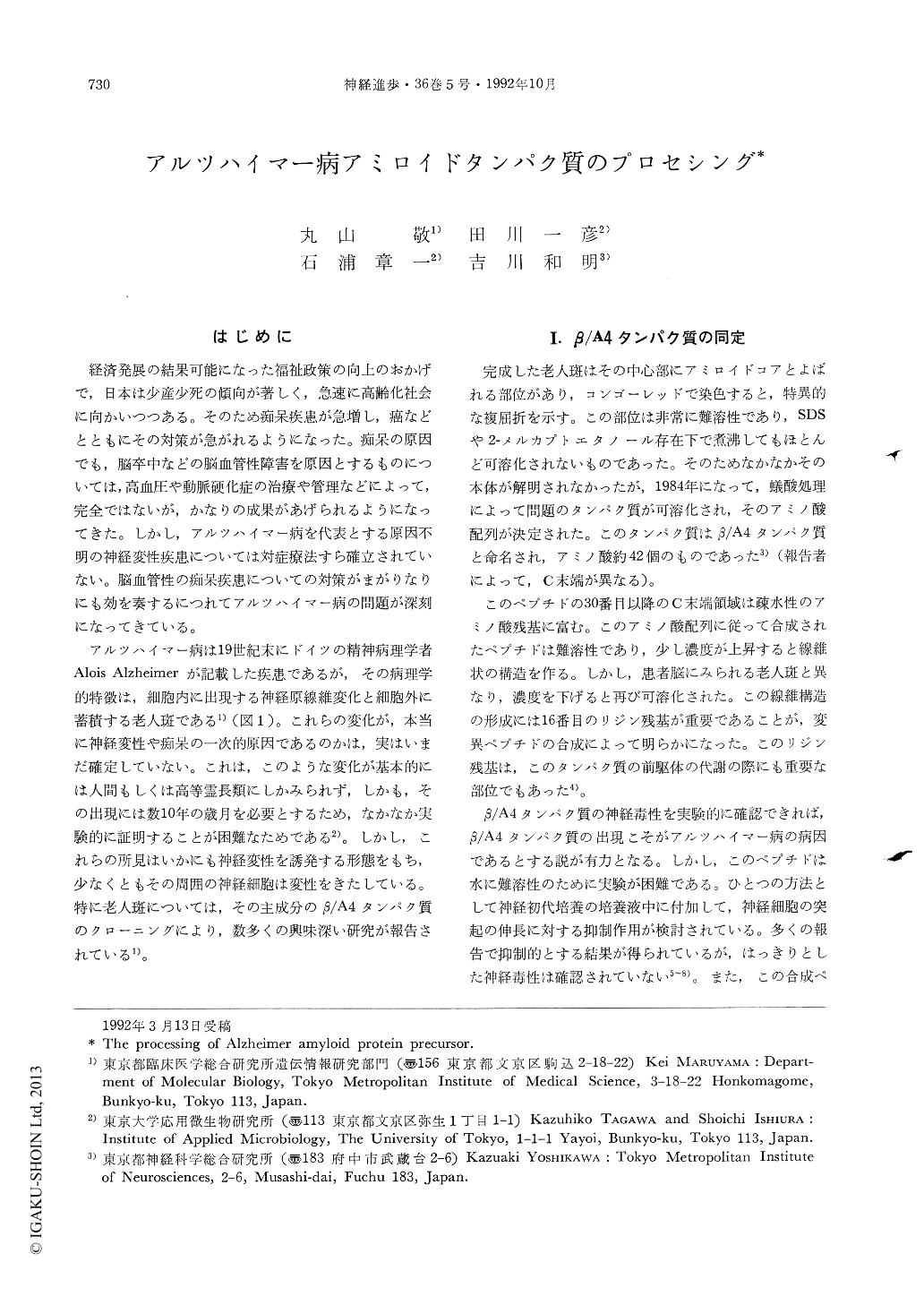Japanese
English
- 有料閲覧
- Abstract 文献概要
- 1ページ目 Look Inside
はじめに
経済発展の結果可能になった福祉政策の向上のおかげで,日本は少産少死の傾向が著しく,急速に高齢化社会に向かいつつある。そのため痴呆疾患が急増し,癌などとともにその対策が急がれるようになった。痴呆の原因でも,脳卒中などの脳血管性障害を原因とするものについては,高血圧や動脈硬化症の治療や管理などによって,完全ではないが,かなりの成果があげられるようになってきた。しかし,アルツハイマー病を代表とする原因不明の神経変性疾患については対症療法すら確立されていない。脳血管性の痴呆疾患についての対策がまがりなりにも効を奏するにつれてアルツハイマー病の問題が深刻になってきている。
アルツハイマー病は19世紀末にドイツの精神病理学者Alois Alzheimerが記載した疾患であるが,その病理学的特徴は,細胞内に出現する神経原線維変化と細胞外に蓄積する老人斑である1)(図1)。これらの変化が,本当に神経変性や痴呆の一次的原因であるのかは,実はいまだ確定していない。これは,このような変化が基本的には人間もしくは高等霊長類にしかみられず,しかも,その出現には数10年の歳月を必要とするため,なかなか実験的に証明することが困難なためである2)。しかし,これらの所見はいかにも神経変性を誘発する形態をもち,少なくともその周囲の神経細胞は変性をきたしている。
With the beginning of the society of an advanced age, the disorders causing dementia have aroused more interest in recent years. Among them Alzheimer's disease (AD) is now the most concerned disease, because the application of biochemical and molecular approaches has led to the identification of the gene product, which might be directly involved in the neuronal degeneration.
The major pathological hallmark of AD is the extracellular deposition of amyloid β/A4 protein (βP) as senile plaque and the intracellular formation of neurofibrillary tangles in the brain. The purification of βP) and the molecular cloning of it revealed the presence of its precursor, amyloid protein precursor (APP).

Copyright © 1992, Igaku-Shoin Ltd. All rights reserved.


